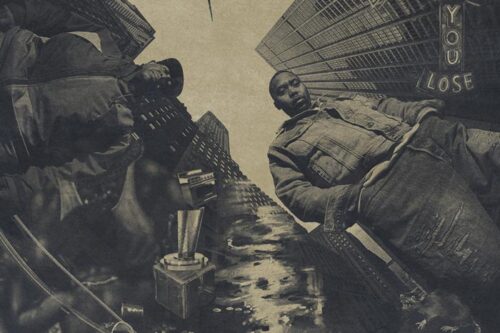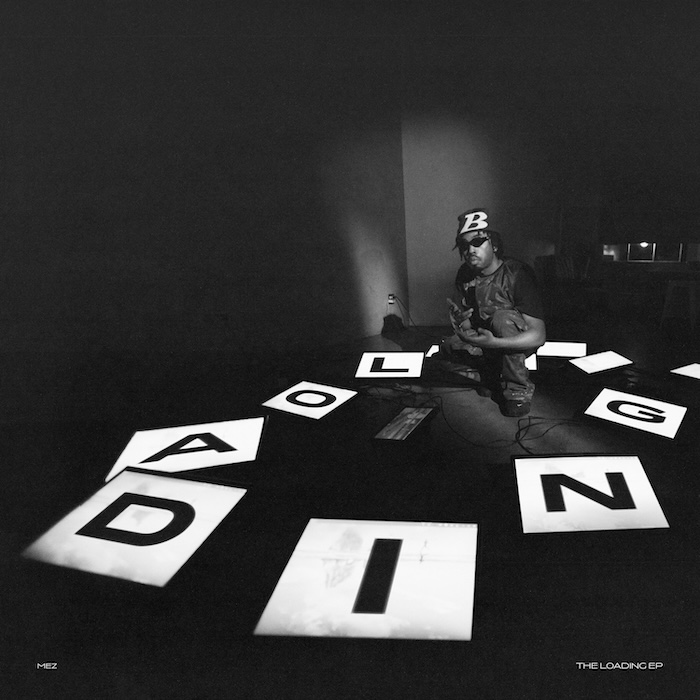
Disclaimer: This post should have went live a lot earlier, but it took me a few weeks to finally get up the courage to press play. – Shake
Progress is synonymous with movement; it presents the beauty of closing in on that imaginary finish line while leaving the conquered obstacles of unfinished business farther in the rearview mirror. Progression, however, is impossible without a beginning, impossible without the desire to move forward and that’s what Mac Miller’s Swimming was. Drowning for so long in the bottomless barrel of bullsh*t we sift through in life, Mac swims to the top for both a breath of fresh air and to begin the journey from the middle of nowhere to safety.
But what happens when the very progression you strive for is unclear and the foreseeable distance presents nothing but the blue ocean meeting the equally blue sky? Swimming for miles and miles, your arms and legs are heavy with soreness yet, your mind sees nothing to show for it. Propelled by “Good News” and perfected with help from the musical genius that is Jon Brion, Mac Miller’s posthumous album, Circles, depicts just that; the mental doubt of progression masking the physical evidence of it.
Beginning the companion album to Swimming, the title track to Circles presents Miller presents as a man surrendering to the weight of self-doubt. “And I cannot be changed, I cannot be changed, no/ Trust me, I’ve tried/ I just end up right at the start of the line/ Drawin’ circles.” While bearing a tolerance for life’s stagnancy here, hope for better days has not completely vanished. It returns with optimism by its side as revealed on “I Can See.” Driven by the realization that “if life is but a dream then so are we,” Miller seeks an undeniable reality to use as motivation to continue forward to reach the ocean shore.
Optimism infrequently presents itself throughout the album with Miller confiding in a glimmer of hope for improvement. In what is quite possibly his brightest moment on the album, Miller bounces up from his seat on “Blue World” to move forward with a remarkably confident stride and a head held high in the clouds. A grasp of life has been found, and life’s obstacles have been momentarily reduced to mere pebbles on the road. Moving farther into the album, Miller gives an ode to his lover on “Hand Me Downs” as he enthralled by the idea of finally having a shoulder to lean on. Both songs serve as small but impactful wins in his ongoing battle with self-doubt.
The tug and pull between self-doubt and optimism accentuated the idea of “swimming in circles” Miller looked to fulfill on Swimming and Circles. Rather than the entire body of work, specific moments of this tug and pull are found on individual experiences on Circles. On “Good News” the battle Miller faces is the freedom to express the opposite extremes of emotion and the impossible feat of keeping all of his onlookers satisfied. “No, they don’t like it when I’m down/ But when I’m flying, oh/ It make ’em so uncomfortable/ So different, what’s the difference?” This longing desire for control appears again on “Woods” as the focus shifts to his love life. His current relationship is approaching the end and as she walks away, Miller fights for yet another chance. Unfortunately, enough is enough and the chapter that is their relationship, one that was engulfed in a repeating narrative of a near-end, issues being fixed and a return to the near-end once again, comes to an end.
Circles presents Miller in a frustrated state. Not in terms of the actuality and realness of failed progress, but rather a false reality that says it does not appear as if progression has been made. Miller was indeed heading down the path of improvement but as dark pessimistic clouds circled his mind, self-doubt began to grow like a storm above waters to mask its evidence. Swimming in circles, he is left in an infinite loop of unknown advancement and soon varying aspects of his life are affected.
Almost a year and a half has passed since Mac Miller’s death and Circles is impressively presented as an album sent directly from the higher place he currently resides in, all thanks to Jon Brion. Left to complete the painting Miller had begun with him, Brion does a brilliant job staying within the lines they outlined on the canvas. Posthumous albums are a tall task to tackle and in many instances, the resulting album becomes distant to the artist’s living work for reasons such as song selection, attention to detail and much more. In this case, Jon Brion polishes Miller’s last body of work with such elegance and beauty that I myself forget he was left to piece together a large chunk of the album.
In literature, TV series – like the most recent season of Power – and movies, circular narratives are a great attention-grabbing trick. They keep viewers frozen with impenetrable interest in the narrative, however, this wasn’t the case for Miller’s mind. Rather, Circles is the robbery of both happiness and satisfaction from Miller triggered by the undeniable absence of improvement. It’s an indisputable fact that Mac Miller would have continued to fight to break through the habitual loops presented in his life. A life gone too soon, Mac Miller leaves us with the reassurance that despite the clouds that swarmed, he himself believed brighter days were in approach.
RIP Mac.
























